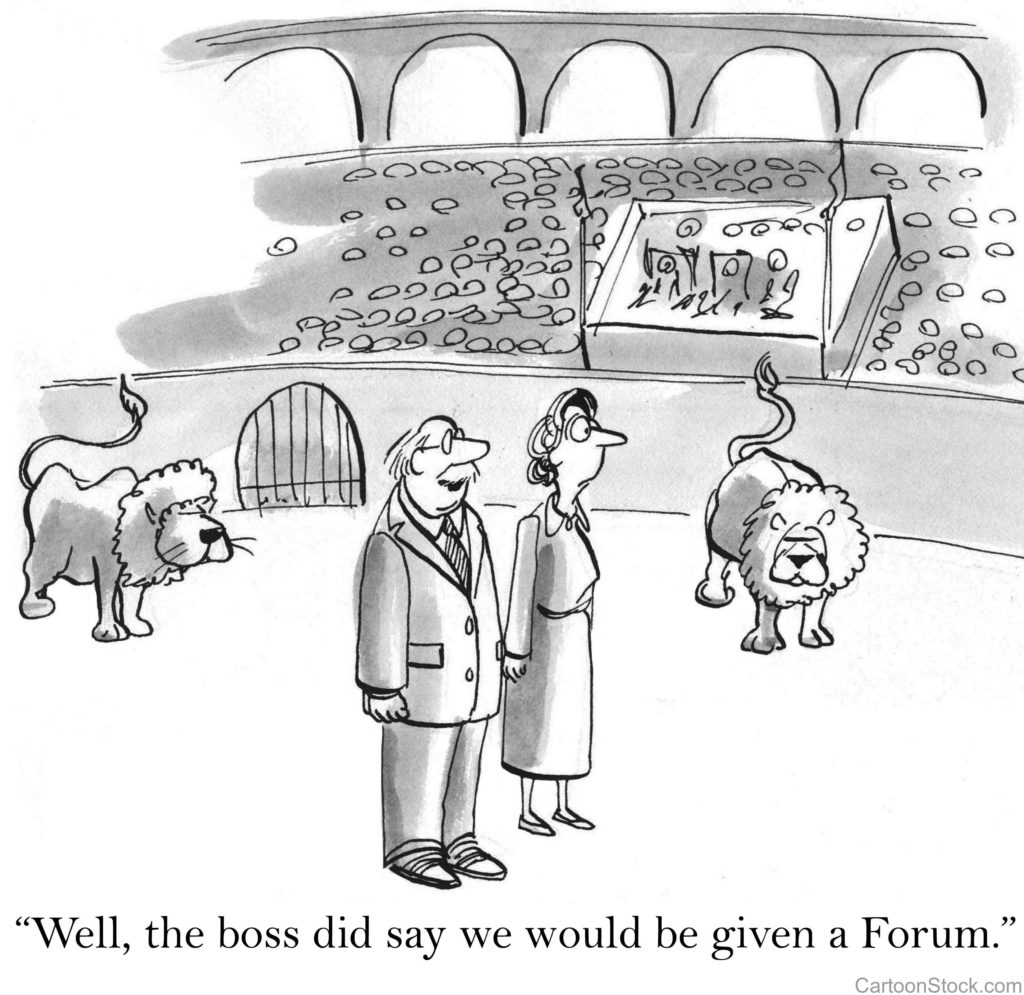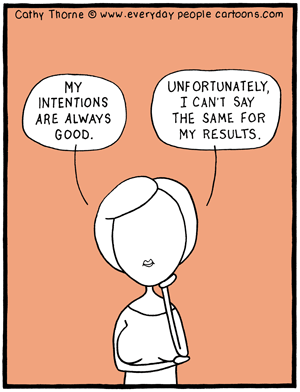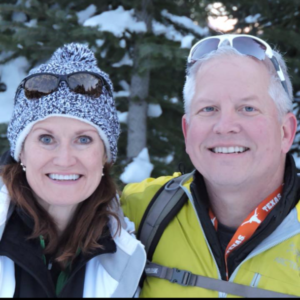
In 1997, managers at Samsung didn’t question a $13 billion investment that would take the company into the automobile industry because the idea’s champion, Samsung Chairman and CEO Lee Kun-Hee, was a forceful personality and a car buff. When Samsung Motors folded only a year into production, Lee wondered why no one had expressed reservations [Teams That Click, page74].
Robust discussion (RD) occurs when everyone in a group is allowed, encouraged, and even required to give their unfiltered input on issues. RD is beneficial because: Every idea or plan will be improved upon when submitted to the unfiltered wisdom and input of others.
Robust discussion is not just the right thing to do; it is the best thing to do. It’s not just politically correct, it is practically helpful.
The prelude to RD may sound like this:
- It’s when the boss says, “I’ve got an idea and I would really value everyone’s input; I want you to be totally honest.”
- It’s when a team member says, “My division is thinking about offering a new service, but before we get started, I want to hear your thoughts about it.”
- It’s when a staff member feels the freedom to say, “I think we’re going in the wrong direction on this project.”
Bossidy and Charan teach that robust dialogue is based on openness, candor, and informality.
-
- Openness—people are not trapped by preconceptions; they’re open-minded.
- Candor—people express their real opinions. Truth is valued more than harmony.
- Informality—informal dialogue invites questions, mental experimentation, and creative and critical thinking. Formality suppresses dialogue and leaves little room for debate.
RD will help to maintain a transparent and healthy workplace. It’s amazing how often there’s an elephant in the room that no one is willing to acknowledge. Clarke and Crossland warn, “Every time your team avoids the critical ‘real issues,’ you lose. Every time the discussion outside the meeting room—physical or virtual—is dramatically different from the discussion inside the room, you lose.”
Often, we avoid challenging dialogue because we value unanimity and harmony. But when we ignore the tough issues, we inadvertently dilute any sense of consensus; true alliance is achieved only when all the major issues have been identified and wrestled with. Consensus is good, unless it is achieved too easily, in which case it becomes suspect.
Leaders must be intentional about establishing RD as standard practice in the organization. Don’t just give your team permission to engage in RD, insist on it. A Hay Group survey found that, in general, people are less inclined to give constructive feedback to higher-status individuals. That’s why they must be given permission and even encouraged to speak up.
Here are some ground rules for healthy RD:
- Everyone should be honest and frank with their comments but also kind and considerate. Don’t be timid about speaking your mind but don’t be tacky and rude.
- When you proffer an idea and people begin to hack at it, don’t be insecure and defensive; we’re not critiquing you, we’re commenting on the idea. Don’t be “thin-skinned.”
- On major issues, everyone needs to speak. Often, those with an outgoing personality will speak first and most, and those who are quiet and reserved will be reluctant to speak. By soliciting everyone’s thoughts, all voices are heard. Furthermore, those who are most opposed to an idea may be silent in the meeting but sabotage the idea later on. By soliciting everyone’s opinion, potential critics are forced to speak up.
- Assure everyone that opposing thoughts will not be punished. RD will not flourish if people think their frankness may be used against them. Even affirm those who express opposition.
- RD is helpful in making good decisions. Make it clear that, following RD, a decision will be made that may or may not align with everyone’s input. It’s an exercise in both open communication involving individual preferences and opinions and consensus-building that should lead to communal support.
As a leader, it takes a lot of emotional maturity and fortitude to establish RD as an integral part of your organization. If you’re insecure, narrow-minded, or domineering, RD will be unsustainable.
How do you know if RD is an acceptable practice in your organization? That’s easy to assess: if it’s not happening, it’s not deemed acceptable. If you seldom hear phrases like, “I don’t agree with that” or, “What’s another alternative?” or, “Could we discuss that further?” or, “I don’t feel comfortable with that”— RD is missing.
Feedback is a gift. It’s a way of giving help. A vigorous feedback system will strengthen you and your organization.


 Book – The Undoing Project by Michael Lewis. Forty years ago, Israeli psychologists Daniel Kahneman and Amos Tversky wrote a series of breathtakingly original papers that invented the field of behavioral economics. They had one of the greatest partnerships in the history of science. In The Undoing Project, Lewis shows how their Nobel Prize–winning theory of the mind altered our perception of reality. The last page made me weep.
Book – The Undoing Project by Michael Lewis. Forty years ago, Israeli psychologists Daniel Kahneman and Amos Tversky wrote a series of breathtakingly original papers that invented the field of behavioral economics. They had one of the greatest partnerships in the history of science. In The Undoing Project, Lewis shows how their Nobel Prize–winning theory of the mind altered our perception of reality. The last page made me weep. – In December I took my family on our 6th consecutive transatlantic
– In December I took my family on our 6th consecutive transatlantic nce of the Messiah at my church in Austin, Texas. Here are
nce of the Messiah at my church in Austin, Texas. Here are
 ears. They are realtors in the Dallas metroplex. Last year they went the second mile in helping us negotiate a difficult real estate deal. Thanks, Scott and Barbara. If you need a realtor in the DFW area, they are among the best (barbarascribner@kw.com).
ears. They are realtors in the Dallas metroplex. Last year they went the second mile in helping us negotiate a difficult real estate deal. Thanks, Scott and Barbara. If you need a realtor in the DFW area, they are among the best (barbarascribner@kw.com).
 Hobby update – In spring 2017 I planted a small vineyard in East Texas. I’m growing Tempranillo, Blanc-du-Bois and Black Spanish grapes. The first two years, the fruit is cut off to channel all energy to the root-system. In July 2020 I’ll be crushing grapes.
Hobby update – In spring 2017 I planted a small vineyard in East Texas. I’m growing Tempranillo, Blanc-du-Bois and Black Spanish grapes. The first two years, the fruit is cut off to channel all energy to the root-system. In July 2020 I’ll be crushing grapes. In memoriam – The day after Thanksgiving, Grams passed from this life to the next. Mary’s mother was 95-years old.
In memoriam – The day after Thanksgiving, Grams passed from this life to the next. Mary’s mother was 95-years old. We can learn just about anything in life if we will simply read and then reflect on what we have read (Warren Bennis).
We can learn just about anything in life if we will simply read and then reflect on what we have read (Warren Bennis).